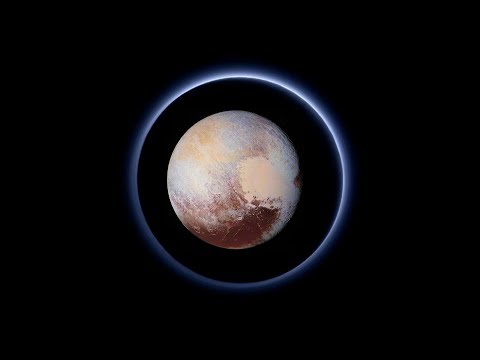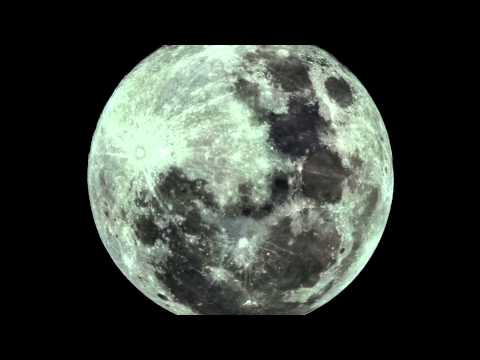Our Solar System Might Have TWO Hidden Planets
Thanks to Brilliant for supporting this SciShow video! As a SciShow viewer, you can keep building your STEM skills with a 30 day free trial and 20% off an annual premium subscription at Brilliant.org/SciShow. “You know, back in my day, there were nine planets in the solar system.” Okay, it depends on how old you are now. But back in 2006, astronomers reclassified Pluto as a dwarf planet. It was a bit of a bummer, but not the end of the story. Because it turns out there may be genuine planets, I’m talking larger than the Earth, that are hiding in our solar system’s boonies. And you heard me right. I said planets, plural. Even after Pluto’s demotion, our solar system might have ten of them. [♪ INTRO] Pluto, as well as a few other dwarf planets, orbit the Sun in a giant puffed-up disk of rocky leftovers known as the Kuiper Belt. But in the 2010s, astronomers noticed something weird was going on. Some of the Kuiper Belt rocks they’d been tracking had orbits that looked a bit off-center. And to explain it, they proposed there was a hidden planet out there, roughly 5 to 10 times the mass of the Earth, whose gravity was to blame. Its placeholder name is Planet 9, and based on computer simulations, it doesn’t live in the Kuiper Belt. In fact, its orbit is roughly 10 times further out. To put some actual numbers on these distances, the Kuiper Belt starts at about Neptune’s orbit, 30 astronomical units from the center of our solar system, and ends at about 50 Astronomical Units. An astronomical unit, or au, is the average distance between the Sun and the Earth. Or, 150 million kilometers give or take. Meanwhile, Planet 9’s proposed orbit only takes it as close as 270 au, and it gets as far as 820 au. Its year would be between 10,000 and 20,000 Earth years long! But despite that distance, it’s massive enough to gravitationally tweak the path some Kuiper Belt rocks take around the Sun. Again, this is assuming Planet 9 really does exist. Before anyone announces our solar system is back to having nine planets, we need direct observational evidence that Planet 9 is out there. And unfortunately, recent surveys that might have had the capability to spot it have come up empty. But while the jury is still out on Planet 9, other astronomers have started thinking a bit farther out. Technically, the Oort cloud is hypothetical just like Planet 9 is. We don’t actually have any direct visual evidence that it’s there. Because just like Planet 9, it’s so far away that it’s super dim. But ever since the 1950s, astronomers have expected what we normally think of as the solar system to be encased in a giant sphere of icy space rocks. Some of those rocks are actually comets, which we only spot while they’re in our neck of the woods, and nowhere near the actual Oort cloud. If you think about the Kuiper belt as our solar system’s suburbs, and Planet 9 is kicking it in the exurbs, then the Oort cloud is the absolute boonies. The middle of nowhere. The inner edge might start about 2,000 au, and the outer edge could stretch half-way to Proxima Centauri. The next star over! The reason the Oort cloud exists is because solar system formation can get messy. There’s a lot going on when you take a humongous cloud of gas and dust and collapse it into a baby star with a bunch of growing planets. Huge amounts of mass get moving really quickly and clump together in strange ways. Wherever you’ve got mass, you’ve got gravitational tugging. And sometimes, with too much gravitational tugging from the wrong body–Jupiter–you can kick an entire planet completely out of the solar system. These are rogue planets, and research announced in 2023 suggests there are more rogues out there than planets bound to a star. But not all bodies will have that much energy. They’ll get flung farther away from where they started, but merely settle into a very distant orbit around their star. In other words, they’ll wind up in the Oort cloud. The question is, could that happen to a body massive enough for us to call it a planet? And more specifically, could there be some kind of Planet 10 orbiting the Sun thousands of au away? Well in 2023, a few astronomers published some simulations that investigated just that. Unlike most previous research, their models took into account the fact that forces outside the solar system have an influence on what happens inside. So some bodies that were getting completely ejected from the solar system in previous models, would merely get stuck in the Oort cloud, instead. And by running a bunch of simulations, they calculated the likelihood that an ice giant, something similar to Uranus or Neptune, could get ejected from the inner solar system and live out the rest of its days in Oort Cloud exile. Apparently, that likelihood is about 7%. So not likely, but not impossible. And to be clear, the case for Planet 10 is also more speculative than Planet 9. The team just wanted to see if a planet could hypothetically wind up out there. For these potential planets, the next step is actually looking for them to see if either, or maybe even both exist! But that will prove tricky. It’s a bit ironic. If either of these planets were orbiting a star many lightyears away, we might have a chance of spotting it. In our own solar system, the task is really difficult for Planet 9 and nearly impossible for a Planet 10 in the Oort cloud. Because they’re in our solar system, they won’t pass between us and the Sun, so we can’t observe a change in a star’s light — that’s the transit method that satellites like Kepler have used to discover thousands of exoplanets. And they’re so dim and far away that taking a picture — direct observation will be tricky. Not impossible, according to some researchers, but tricky. Plus, both planets would likely have very oblong orbits that are super tilted relative to Earth’s. And we don’t have solid numbers on exactly how oblong and how tilted. That makes pointing your telescope in the right direction to spot them really, really hard. Our only hope would be a technique called gravitational microlensing, which is currently being used to find those rogue planets in-between star systems. The technique takes advantage of the fact that a planet, while passing in front of a background star, will bend and magnify that starlight. Even if we can’t see the planet, we can catch that brief flash of light and know something of a certain mass made it happen. Between a ghost planet 9 and a possible-but-unlikely planet 10, our conception of our solar system may change someday if we can find these things. Which on one hand, is pretty fun to think about. But on the other hand, Get off my lawn with your new-fangled hypothetical planets and come back when you’ve got some cold hard proof! This SciShow video is supported by Brilliant: an online learning platform with thousands of interactive lessons in math, science, and computer science. Like their course in 3D Geometry that teaches you how to find the shortest distance through 3D space. That course could even help you contextualize how far away these extra planets are. And if you ever find yourself visiting those planets, where the internet connection isn’t quite as strong, you can still take Brilliant courses along the voyage because they’re available offline using the iOS and Android app. To get started, you can visit Brilliant.org/SciShow or click the link in the description down below. That link also gives you a free 30 day trial and 20% off an annual premium Brilliant subscription. Thanks for watching this SciShow video! [♪ OUTRO]













